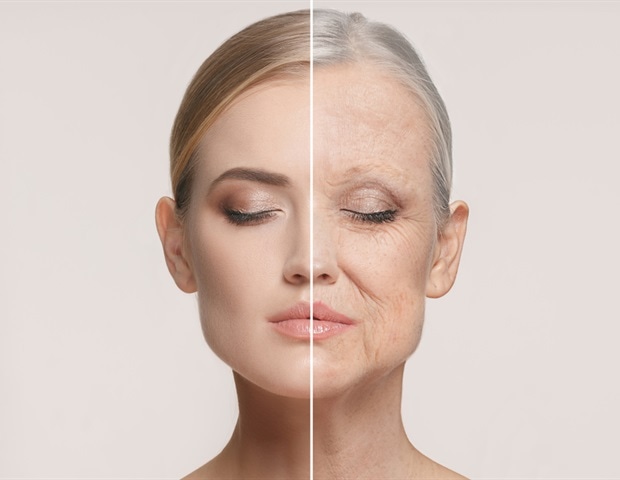These findings may help inform precision interventions for managing stress and enhancing resilience.
 Study: The effects of childhood adversity on twenty-five disease biomarkers and twenty health conditions in adulthood: Differences by sex and stressor type. Image Credit: New Africa / Shutterstock.com
Study: The effects of childhood adversity on twenty-five disease biomarkers and twenty health conditions in adulthood: Differences by sex and stressor type. Image Credit: New Africa / Shutterstock.com
A recent Brain, Behavior, and Immunity study assesses the heterogeneous effects of childhood adversity on disease biomarkers and health conditions in adulthood.
Adverse childhood experiences and adulthood health
Current knowledge of the psychosocial drivers of chronic conditions is limited, which has prevented the development of effective screening methods and personalized treatments. The psychosocial stressors that occur during childhood, which are collectively referred to as adverse childhood experiences (ACEs), can include, but are not limited to, emotional neglect, physical abuse, as well as witnessing domestic abuse or violence.
Different stressors can induce unique and different effects on health and physiology. For example, as compared to neglect during childhood, abuse has been shown to be more prognostic of inflammation later in life. Furthermore, stressors are often correlated and rarely occur in isolation, which makes it difficult to assess their independent effects.
According to the cumulative stress model, ACEs have an additive effect on health and overall development. This model assumes that different ACEs have similar consequences for human health and development, as they are ‘created equal.’
Alternatively, the dimensions of adversity theory suggest heterogeneity across specific stressors while considering a wide range of dimensions, such as environmental harshness, threat, deprivation, and unpredictability.
About the study
The present study aims to identify the clustering of individuals based on their exposure to various ACEs, assess whether these clusters reflect the dimensions of adversity theory or cumulative stress model, and explore cluster heterogeneity based on sex and individual stressors. Twenty major health conditions and twenty-five different stress and disease biomarkers were considered.
Latent class analyses (LCA) were conducted to identify clusters of adults who experienced multiple ACEs. A total of 2,111 individuals from the Midlife in the United States (MIDUS) study were identified, with an average age of 53, 54.8% of whom were female.
The relationships between 25 biomarkers of inflammation, metabolism, and stress, as well as 20 major health conditions, latent stressor exposure groups, and individual stressors, were also evaluated.
Study findings
Optimal LCA models yielded two male classes of low- and high-stress, as well as low-, moderate-, and high-stress classes among females. These classes were consistent across the MIDUS waves.
As compared to males with low stress, those in the high-stress category had higher serum levels of inflammation biomarkers, including interleukin 6 (IL-6), C-reactive protein (CRP), and intercellular adhesion molecule (I-CAM), and poorer metabolic health, as demonstrated by higher body mass index (BMI), insulin, insulin resistance, triglycerides, and low-density lipoprotein (LDL) levels, as well as lower high-density lipoprotein (HDL) levels. High-stress females had higher BMI, insulin, insulin resistance, and triglycerides levels, as well as lower urinary cortisol levels, as compared to low-stress females.
High-stress males were at a greater risk of several health conditions as compared to low-stress males, including circulation problems, high blood pressure, thyroid disease, cholesterol problems, cancer, depression, and arthritis.
Compared to low-stress females, high-stress females were more likely to experience 18 of the 20 health conditions assessed, except glaucoma and blood clots. Moderate-stress females were also more likely to have cholesterol problems, thyroid disease, and depression.
Elevated inflammatory activity was most reflective of the effects of welfare status during childhood, as higher inflammation was observed among males and females who reported being on welfare. Financial distress was strongly associated with stress markers for males, as well as inflammation and glucose levels among females.
High levels of physical abuse were associated with larger anthropometric measurements and higher markers of glucose metabolism for females. Emotional abuse and neglect were more strongly associated with blood disorders, thyroid issues, and glaucoma for males and, to a lesser extent, behavioral or mental issues.
For females and most conditions, welfare status during childhood was more prognostic of health problems as compared to males. Among men on welfare, behavioral issues and risks of blood disorders were slightly higher as compared to females.
Conclusions
Different stressors during childhood have different effects on biomarkers and health, with notable heterogeneity observed across the sexes. Even among the same higher-order construct, different stressor types had distinct implications for health.
Taken together, these findings demonstrate how ACEs relate to health conditions and disease biology that could lead to significant morbidity and mortality in adulthood. These data provide important insights into how stressor-health associations differ across sexes and by types of childhood stressors.
The current study highlights the need to screen for early-life stressors, which could help reduce disease risk and burden in adulthood.
Journal reference:
- Alley, J., Gassen, J., & Slavich, G. M. (2024) The effects of childhood adversity on twenty-five disease biomarkers and twenty health conditions in adulthood: Differences by sex and stressor type. Brain, Behavior, and Immunity 123;164-176. doi:10.1016/j.bbi.2024.07.019

 15 hours ago
1
15 hours ago
1
















.png)

.png)
.png)
.png)













 English (US) ·
English (US) ·  Hindi (IN) ·
Hindi (IN) ·